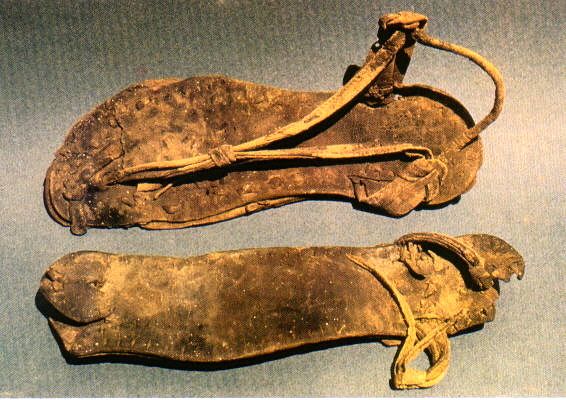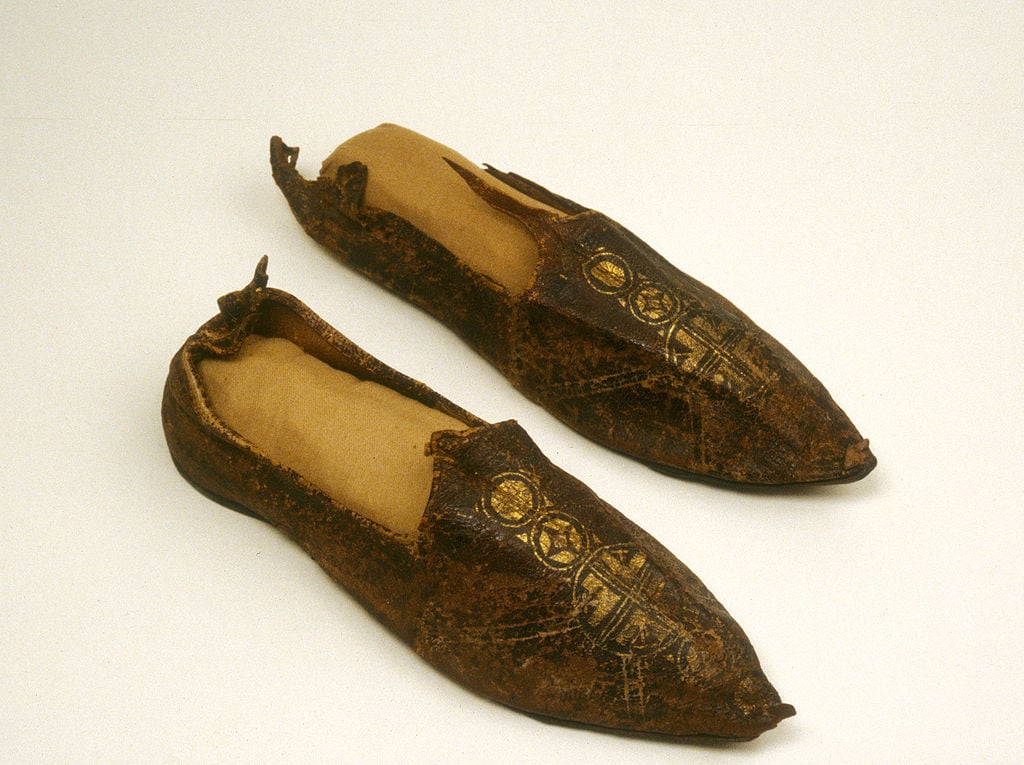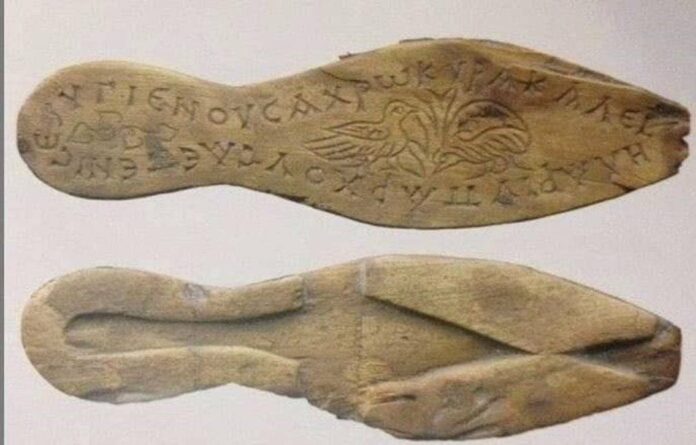In a remarkable archaeological find in Istanbul, a pair of women’s sandals dating back 1,500 years has emerged from the annals of history, providing a fascinating insight into Byzantine life and fashion. Discovered during excavations associated with the Marmaray project, these sandals have not only piqued the interest of researchers but have also enchanted history lovers around the globe.
A Peek into Byzantine Fashion
The sandals unearthed from the Marmaray excavation represent more than mere footwear; they serve as a portal to the past. A standout feature of these ancient sandals is the Greek inscription etched onto them, which reads: “Use in health, lady, wear in beauty and happiness.” This message not only highlights the sandals’ practical use but also conveys a sincere wish for the well-being and joy of the wearer or creator. c

The design of these sandals showcases the fashion trends that were prevalent during the Byzantine Empire. Renowned for their vibrant colors and intricate patterns, Byzantines embellished their clothing and accessories with elaborate designs, reflecting their cultural sophistication and artistic flair.
The Importance of Color and Modesty
Byzantine society exhibited a complex relationship between modesty and decoration. While modesty was a dominant cultural norm, as seen in conservative clothing styles, the discovered sandals reveal a contrasting appreciation for ornamental features. Footwear from this period, including sandals, slippers, and boots, was often adorned with intricate designs, illustrating a nuanced perspective on fashion.

Particularly noteworthy is the use of red in women’s shoes. Traditionally associated with Imperial attire in men’s footwear, this color highlights the intricate gender dynamics and fashion choices of the time. The selection of red for women’s sandals signifies a harmonious blend of modesty with a touch of luxury.
Revealing Constantinople’s Rich Heritage
The Marmaray excavation project, which commenced in 2004, has unveiled a wealth of historical artifacts that provide valuable insights into Constantinople’s dynamic past. To date, approximately sixty thousand artifacts have been recovered and are now housed in the Istanbul Archaeological Museum. These discoveries not only shed light on the Byzantine era but also enhance our understanding of the city’s development.

Notable finds from the excavation include the Harbor of Eleutherios and an extensive collection of medieval sunken vessels, which illuminate Constantinople’s significance as a major trade and commerce center during Late Antiquity. Furthermore, the excavation has uncovered evidence of settlement in Constantinople dating back to 6000 BC. Artifacts such as ancient footprints and pottery shards offer a comprehensive view of the city’s origins and evolution over thousands of years.
Conclusion
The discovery of these 1,500-year-old sandals, adorned with their touching Greek inscription, offers more than just a look at Byzantine fashion; it underscores the lasting legacy of the Byzantine Empire and its cultural impact. As excavations progress, each new revelation deepens our understanding of Constantinople’s historical and cultural significance. These sandals, merging practicality with sentimentality, stand as a testament to the rich tapestry of life in ancient Byzantium and remind us of humanity’s enduring quest for beauty and happiness.

